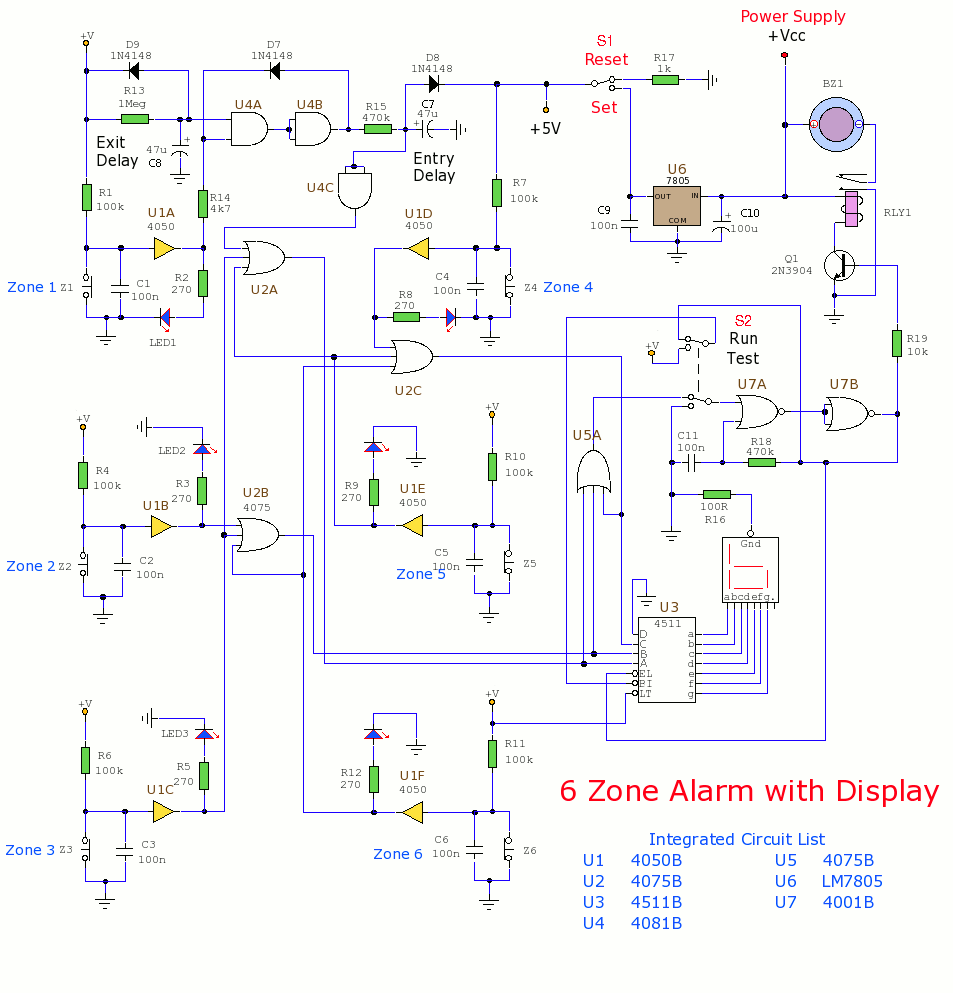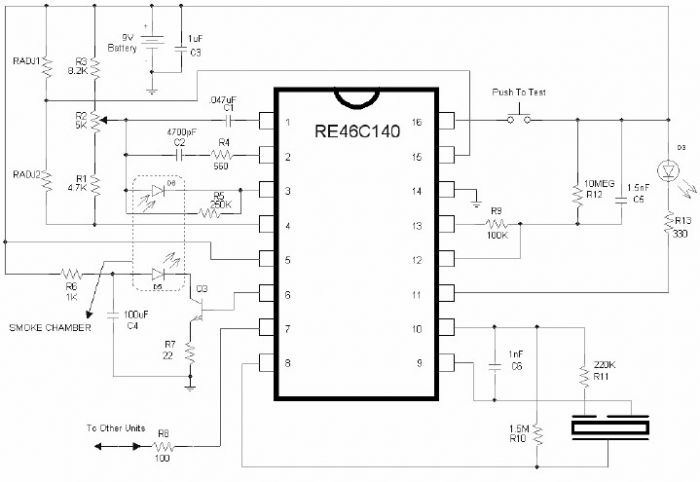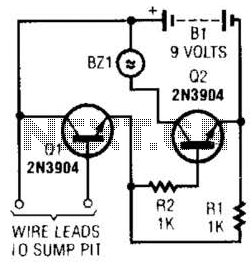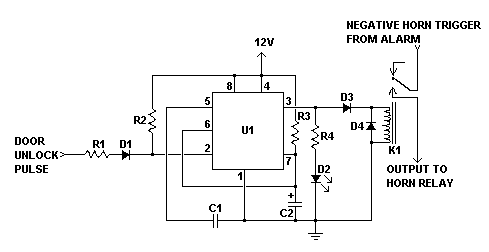
Motorcycle Alarm
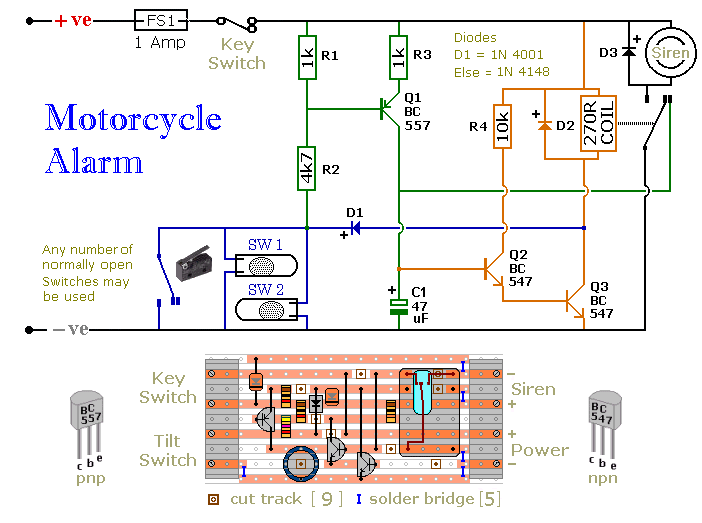
The circuit board and switches must be protected from the elements. Dampness or condensation will cause malfunction. Without its terminal blocks, the board is small. Ideally, you should try to find a siren with enough spare space inside to accommodate it. Fit a 1-amp in-line fuse close to the power source. This protects the wiring. Instead of using a key-switch you can use a hidden switch; or you could use the normally closed contacts of a small relay. Wire the relay coil so that it is energized while the ignition is on. Then every time you turn the ignition off, the alarm will set itself. Any number of normally open switches may be used. Fit the mercury switches so that they close when the steering is moved or when the bike is lifted off its side-stand or pushed forward off its centre-stand. Use micro-switches to protect removable panels.
The described circuit serves as a vehicle alarm system designed to ensure protection against unauthorized access and environmental factors. The core components of this system include a circuit board, switches, a siren, a relay, and fuses, all of which must be configured to work harmoniously.
The circuit board houses the necessary electronics and should be encapsulated in a weather-resistant enclosure to prevent damage from dampness or condensation. It is vital that the board is kept as compact as possible, which is why the use of terminal blocks is minimized. The siren should be selected with adequate internal space to accommodate the circuit board, facilitating easy installation and maintenance.
A 1-amp in-line fuse is to be installed close to the power source to provide overcurrent protection for the wiring. This fuse acts as a safeguard against potential short circuits or overloads, ensuring the longevity of the circuit components.
For user activation, the system can replace a traditional key-switch with a hidden switch for increased security. Alternatively, utilizing the normally closed contacts of a small relay can provide a robust solution. The relay coil should be wired to remain energized while the vehicle's ignition is on, allowing the system to automatically arm itself when the ignition is turned off. This feature enhances the convenience for users, as it eliminates the need for manual activation after each use.
The alarm system can incorporate multiple normally open switches, such as mercury switches, which are strategically placed to trigger the alarm under specific conditions, such as when the vehicle is moved or lifted off its side-stand or centre-stand. Additionally, micro-switches can be employed to safeguard removable panels, ensuring that any unauthorized access attempts will activate the alarm.
In summary, this alarm circuit design prioritizes compactness, environmental protection, and user-friendly operation, making it an effective solution for vehicle security. Proper installation and component selection are essential for the system's reliable performance.The circuit board and switches must be protected from the elements. Dampness or condensation will cause malfunction. Without its terminal blocks, the board is small. Ideally, you should try to find a siren with enough spare space inside to accommodate it. Fit a 1-amp in-line fuse close to the power source. This protects the wiring. Instead of using a key-switch you can use a hidden switch; or you could use the normally closed contacts of a small relay. Wire the relay coil so that it is energized while the ignition is on. Then every time you turn the ignition off, the alarm will set itself. Any number of normally open switches may be used. Fit the mercury switches so that they close when the steering is moved or when the bike is lifted off its side-stand or pushed forward off its centre-stand. Use micro-switches to protect removable panels a 🔗 External reference
The described circuit serves as a vehicle alarm system designed to ensure protection against unauthorized access and environmental factors. The core components of this system include a circuit board, switches, a siren, a relay, and fuses, all of which must be configured to work harmoniously.
The circuit board houses the necessary electronics and should be encapsulated in a weather-resistant enclosure to prevent damage from dampness or condensation. It is vital that the board is kept as compact as possible, which is why the use of terminal blocks is minimized. The siren should be selected with adequate internal space to accommodate the circuit board, facilitating easy installation and maintenance.
A 1-amp in-line fuse is to be installed close to the power source to provide overcurrent protection for the wiring. This fuse acts as a safeguard against potential short circuits or overloads, ensuring the longevity of the circuit components.
For user activation, the system can replace a traditional key-switch with a hidden switch for increased security. Alternatively, utilizing the normally closed contacts of a small relay can provide a robust solution. The relay coil should be wired to remain energized while the vehicle's ignition is on, allowing the system to automatically arm itself when the ignition is turned off. This feature enhances the convenience for users, as it eliminates the need for manual activation after each use.
The alarm system can incorporate multiple normally open switches, such as mercury switches, which are strategically placed to trigger the alarm under specific conditions, such as when the vehicle is moved or lifted off its side-stand or centre-stand. Additionally, micro-switches can be employed to safeguard removable panels, ensuring that any unauthorized access attempts will activate the alarm.
In summary, this alarm circuit design prioritizes compactness, environmental protection, and user-friendly operation, making it an effective solution for vehicle security. Proper installation and component selection are essential for the system's reliable performance.The circuit board and switches must be protected from the elements. Dampness or condensation will cause malfunction. Without its terminal blocks, the board is small. Ideally, you should try to find a siren with enough spare space inside to accommodate it. Fit a 1-amp in-line fuse close to the power source. This protects the wiring. Instead of using a key-switch you can use a hidden switch; or you could use the normally closed contacts of a small relay. Wire the relay coil so that it is energized while the ignition is on. Then every time you turn the ignition off, the alarm will set itself. Any number of normally open switches may be used. Fit the mercury switches so that they close when the steering is moved or when the bike is lifted off its side-stand or pushed forward off its centre-stand. Use micro-switches to protect removable panels a 🔗 External reference

